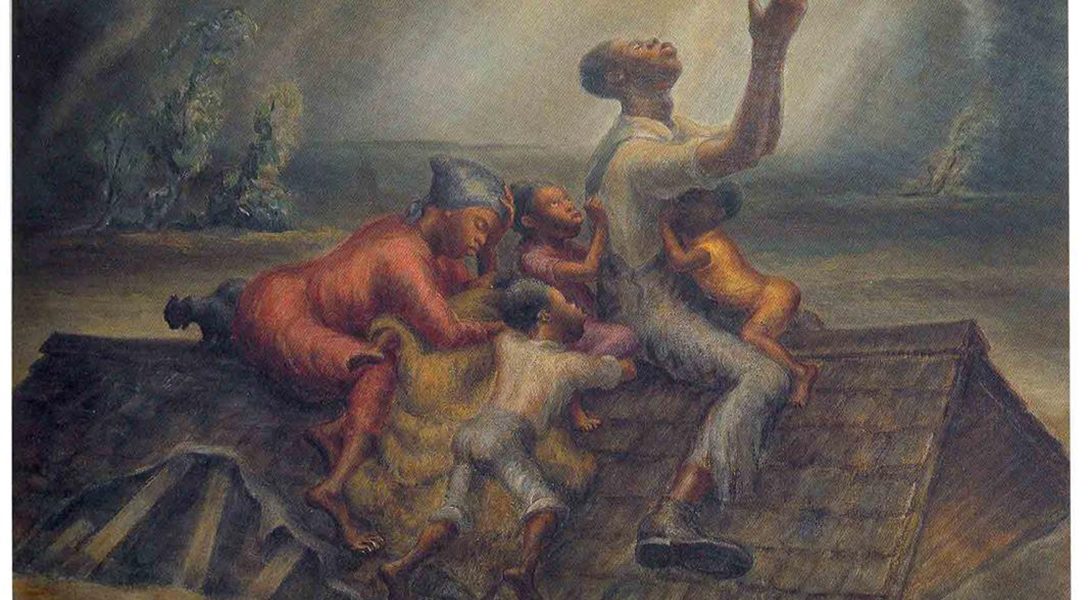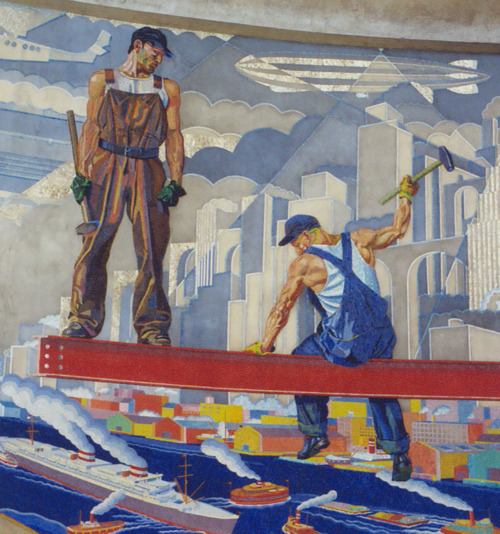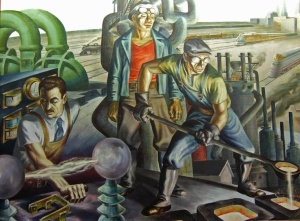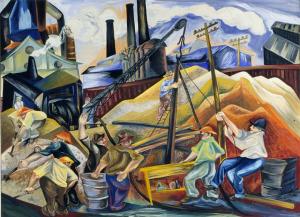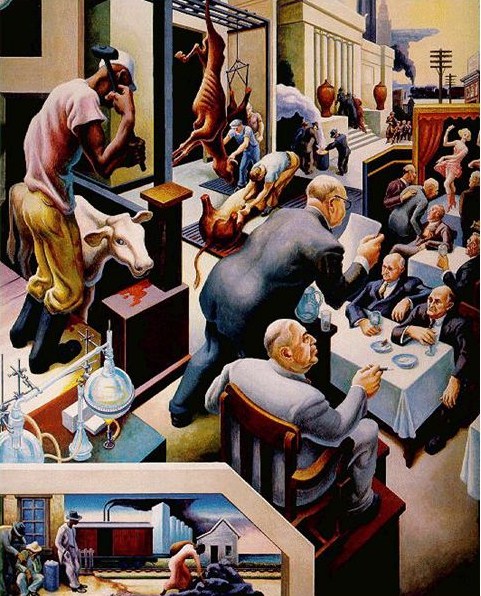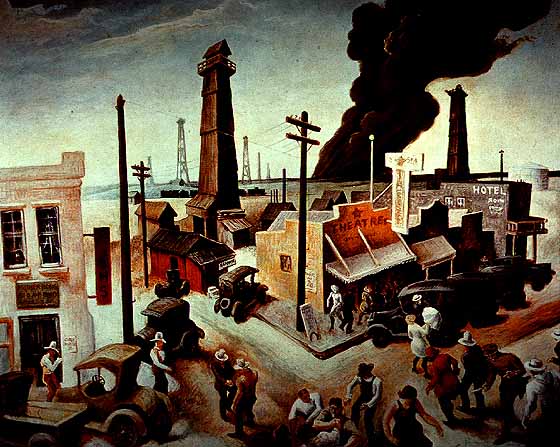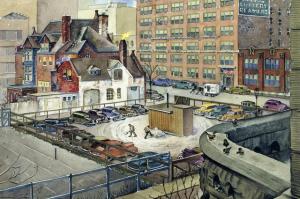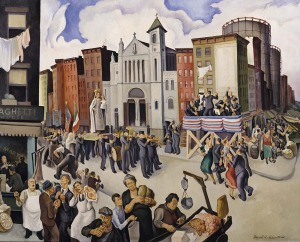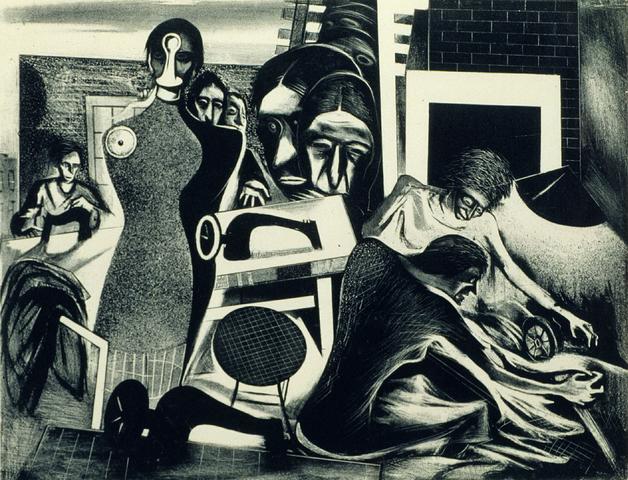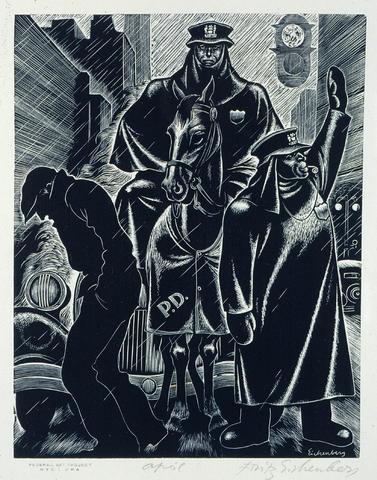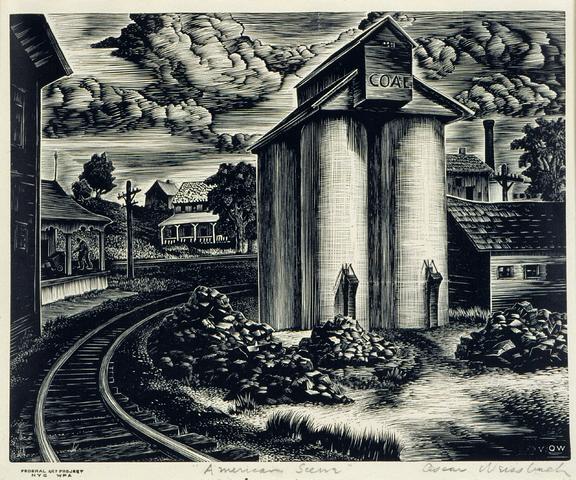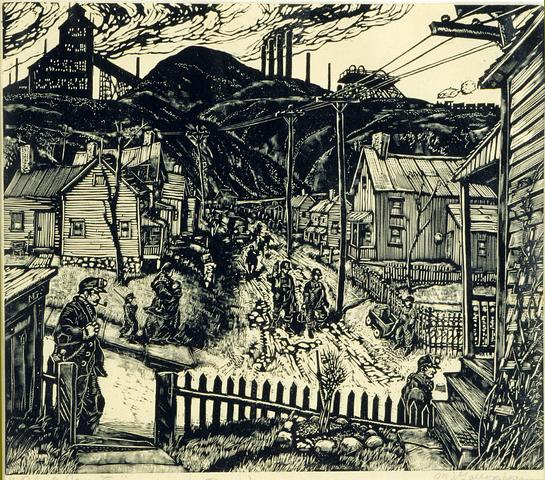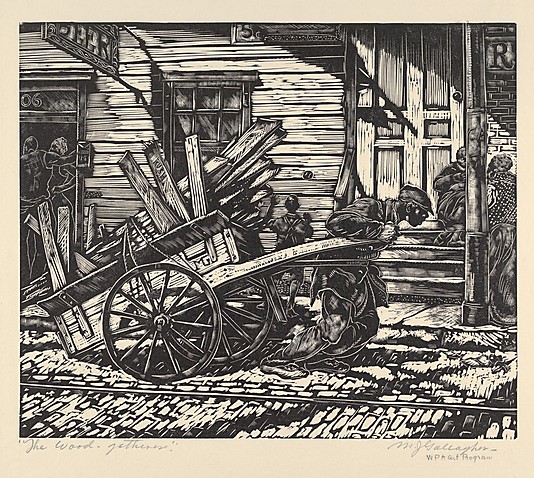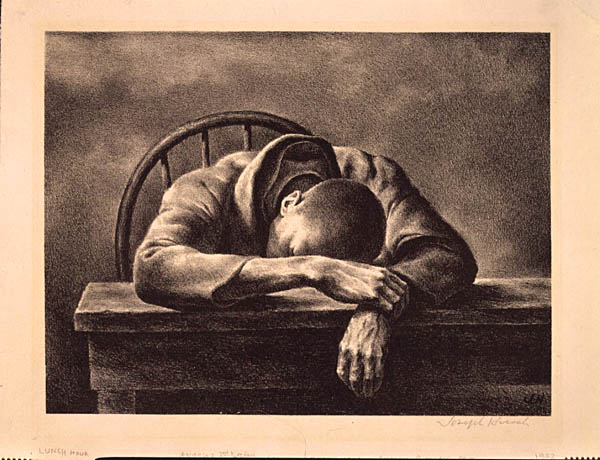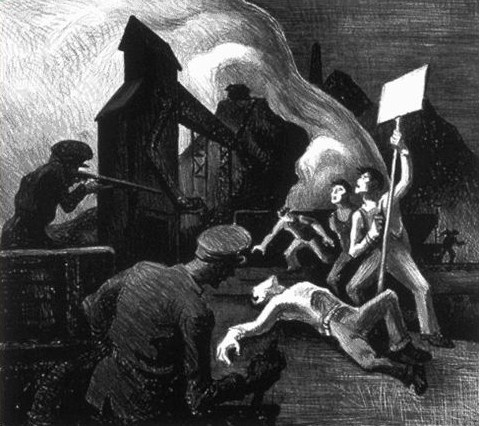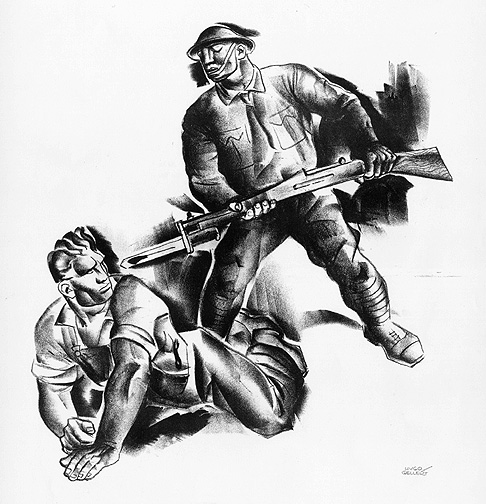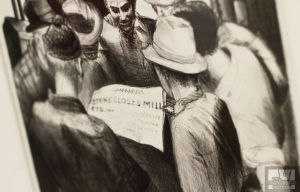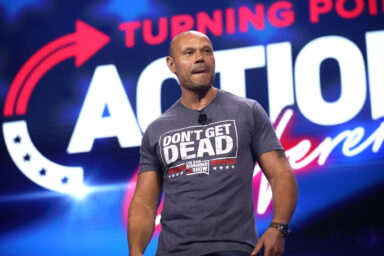Labor Day: Art From the Great Depression
Images More Powerful than Pretty
Paintings, drawings, and prints from a dynamic time when President Roosevelt saved America by putting people — including artists — back to work.
(Published originally 9/1/2014)
Here, in honor of Labor Day, is a collection of paintings and prints from the Great Depression. Images from the gorgeous to the grim, all fascinating.
The Depression was characterized by unemployment, homelessness, hunger, bankruptcies, home foreclosures, dust, drought, and inequality in the distribution of wealth. And the infrastructure was crumbling. Sound familiar?
Do you ever wish for some kind of reincarnation of the New Deal? You would not be the only one. According to Nobel Prize-winning economist Paul Krugman “A rational political system would long since have created a 21st-century version of the Works Progress Administration — we’d be putting the unemployed to work doing what needs to be done, repairing and improving our fraying infrastructure.”
In 1935, President Franklin D. Roosevelt signed into law the WPA — Works Progress Administration, later called the Work Projects Administration — and it brought the country back to life.
The program was ingenious: by solving unemployment, it also solved the problem of the infrastructure. Millions were employed by the WPA building “651,087 miles of highways, roads and streets; constructed, repaired or improved 124,031 bridges; erected 125,110 public buildings; created 8,192 public parks and built or improved 853 airports,” according to a journalist from the Depression era.
And it took people off welfare. Harry Hopkins, the chief architect of the New Deal, said,
“Give a man a dole, and you save his body and destroy his spirit. Give him a job and you save both body and spirit.”
Among those saved were artists. Part of the WPA was the Federal Arts Project which put unemployed artists back to work painting murals and creating sculptures for public buildings. When criticized for including artists and other white collar workers in the WPA, Hopkins said,
“Would you put them out in a ditch with a pick axe and make them like it… We decided to take the skills of these people wherever we found them and put them to work to save their skills when the public wanted them.”
Thanks to this inspired decision, we can enjoy these powerful works of art.
(click images to enlarge)
Winold Reiss (Commissioned for Cincinnati Union Terminal)
Harry Sternberg “Chicago: Epoch of a Great City”
Bernece Berkman “South Chicago” (Series #7).
Thomas Hart Benton “Kansas City”
“We have always known that heedless self-interest was bad morals; we know now that it is bad economics.” Franklin D. Roosevelt
Thomas Hart Benton “Boomtown”
Rowena Fry “The Parking Lot”
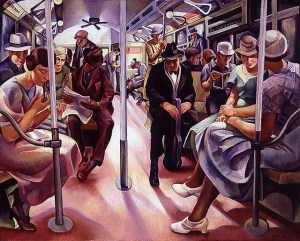
Lily Furedi “Subway”
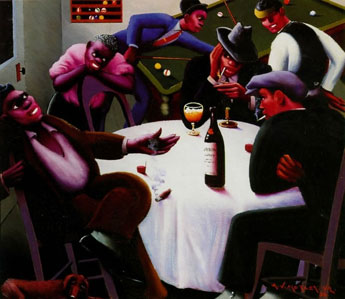
Archibald Motley, Jr.“The Liar”
Daniel R. Celentano “Festival” (Little Italy)
Daniel R. Celentano “Italian Harlem Street Scene”
Dox Thrash “Ship Fitters”
Nicolai Cikovsky “On the East River”
“The test of our progress is not whether we add more to the abundance of those who have much; it is whether we provide enough for those who have too little.” Franklin D. Roosevelt
Louis Lozowick “Guts of Manhattan”
Harold Anchel “Cafeteria”
Boris Gorelick “Sweat Shop”
Fritz Eichenberg “April”
Oscar Weissbuch “American Scene”
Michael J. Gallagher “Black Country”
Michael J. Gallagher “The Wood Gatherer”
Manuel G. Silberger “Labor”
Blanche Grambs “No Work”
Joseph Hirsch “Lunch Hour”
Thomas Hart Benton “Mine Strike”
Hugo Gellert “A Wounded Striker and the Soldier”
Minna Citron “Strike News”
“The true conservative is the man who has a real concern for injustices and takes thought against the day of reckoning.” Franklin D. Roosevelt
Conrad A. Albrizio “The New Deal” Dedicated to President Roosevelt, 1934
“There is a mysterious cycle in human events. To some generations much is given. Of other generations much is expected. This generation of Americans has a rendezvous with destiny.” Franklin D. Roosevelt
Related front page panorama photo credit: Related front page panorama photo credit: Seamstress (Moses Soyer / Smithsonian American Art Museum), Mine Rescue (Fletcher Martin / Smithsonian American Art Museum), Artwork Days without End (Frank Cassara / Smithsonian American Art Museum).
